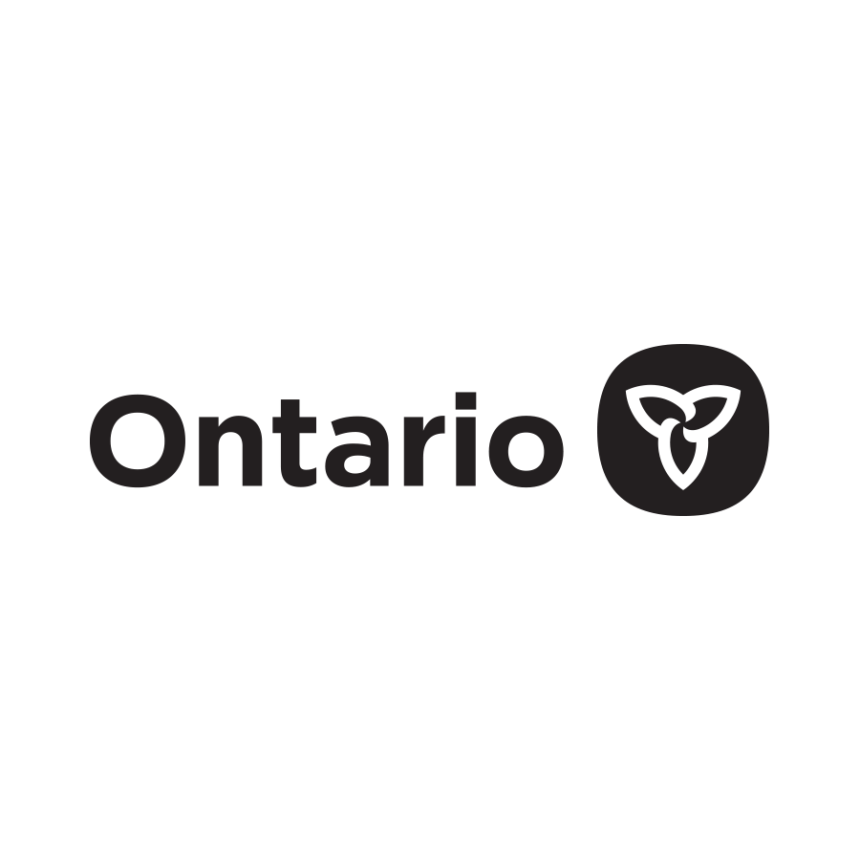

In the first article of this two-part series, we spoke with Natasha Lebel, former DesignTO Board Chair and co-founder of Lebel & Bouliane, to chat about the measures the Canadian government has been taking in response to the pandemic, and what it means for individuals and business owners. In this second article, we ask Natasha for some practical advice on what small businesses can do during the crisis.
If you were advising a small business leader, what would your advice be for them in the short-term, medium-term and long-term?
Short-term
- Seek all available assistance. There is a great need for government assistance at this time, and the need will be much longer than anticipated for many businesses. If a business is not under financial stress, they should not take from the emergency relief funds.
- Contact all your clients and collect on current invoices due. If they cannot pay, stop or delay the project. If they can pay, but are uncertain about the future viability of the project, determine a strategic point in the project where no value will be destroyed by a pause. Ensure that the client will make good on payment for work they have agreed to continue. Get this in writing.
- Contact your suppliers and sub-consultants. Update them on the situation with the clients. Work out new payment terms whereby they will get paid when you get paid. If the client has requested you keep working, ensure that your suppliers and sub-consultants are willing to share the risk. Get this in writing.
Forecast the needs your customers will have and look to offer solutions that are relevant to your business.
Medium-term
- Clean house, restructure if you need to, address inefficiencies with your current operations. Brace for the long game, and if you can afford it, commit resources to the tools and infrastructure that will optimize your efforts. Keep a positive cashflow at all times.
- Stay informed of changes in the general economy. Keep abreast of your industry. Forecast the needs your customers will have and look to offer solutions that are relevant to your business.
- Save cash for the dips that will certainly occur in your cashflow. Take time to truly understand your finances and the cost drivers of your current business. Look ahead for the next 6 months and project what this cycle will look like for your clients, your industry and your business.
Long-term
- Reassess and make changes to your business every step of the way. Take advantage of the new marketplace to improve your business. Appreciate this opportunity to exercise true leadership.
- Make radical changes to your business if you need to. All changes should be accompanied by a financial and proper business analysis. There are many online resources and templates that can help. Start with the following:
- Cashflow analysis
- Revenues and expenses
- SWOT analysis (post-COVID)
- Industry analysis (start with talking to your clients)
If you were advising an independent designer or artist, what would your top 5 recommendations be for them in the short-term, medium-term and long-term?
- If you can’t make ends meet, apply for all subsidies available.
- Collect your due invoices. If you cannot collect them at this time, structure a payment plan.
- Hold tight, talk to your clients and make plans for the future, as much as you can. Reduce costs, increase your efficiencies. Keep your ear to the ground, avoid the temptation to “retreat” into a bubble, stay alert and connected to your industry. If there is less work available in your industry in upcoming months, it will go to those who are present and ready to capture the opportunity.
- If you are working on marketing or forward-looking ideas: know your audience. Those who are working in essential services, are working very hard, inefficiently, and in isolation, some with children or parents in their care. Make sure you understand who will be receiving your marketing and consider whether it is relevant for them at this time.
- For those who are not working or under-employed: get together and generate ideas. Set professional and personal goals. Work on your portfolio, update your website, create a new product, nurture a network, barter. Learn about economics. If you can, volunteer. Contribute to a cause that is meaningful to you, help someone who can use your time or skills.
- Learn new skills. I’ve recently come across some individuals looking for work who invested in online technical professional development courses in architecture. Not only did their initiative and personal investment impress me, but they will have taken this opportunity to advance their skills.
If you can, volunteer. Contribute to a cause that is meaningful to you, help someone who can use your time or skills.
The above is great advice for anyone wanting to maintain or adjust their current business. But there are some designers and artists for whom a sabbatical, a leave of absence or simply an extended ‘staycation’ is a better option. Some of us are homeschooling or child-minding for most of the day. We all live with different circumstances. Whatever your circumstances are, list them and say them out loud. Those areas of your life which need most tending, e.g. family, profession, revenue, will reveal themselves and offer some suggestion of next steps.
It’s going to be challenging for design sector businesses to work their way out of the upcoming recession. What do you think are the top 5 challenges? How can we plan to overcome them?
- The cash crunch will be the most difficult. We have lived through a very long period of prosperity. There are two generations who have lived through major recessions and two who have not. It is unlikely that the cost of living will lower significantly in a city like Toronto. Strategic cash management on a personal and business level is a very important skill right now.
- The concern and uncertainty of returning waves of COVID-19 is a close second. This uncertainty will continue to impact behaviours, policies and trade over the next 18-24 months. This will limit the confidence and investment in the markets. Many small businesses will disappear during this time, from early retirement, lack of revenue, or simply because the business is too difficult to manage or forecast.
- Long-term unemployment in certain sectors will drag out the recession. It will be a scary time for those who have not known high unemployment in Canada, and young people will be most impacted as they are the larger, less experienced and less specialized generation.
- Supply chain disruptions will hurt healthy businesses and may kill businesses that are already in distress. Are you ready for interruption of service to you or your enterprise? It will be a vulnerable time for many business owners as government policies, major changes in supply and demand, and even illness befall some key players in your supply chain.
- Bullwhip effect. (Look it up!) For example, businesses such as ours (architecture) depend on the health of the construction industry. Much of the industry was halted for 8 weeks, which will result in resource and supply chain inefficiencies in the upcoming year. Many job sites will struggle to maintain efficient schedules, resulting in disruption of construction cycles. This will have a cascading impact on architects, suppliers, trades, service providers, etc., over the next 24 months.
- Holding fast in the face of profit erosion. What is the revenue threshold at which your business is no longer viable? Or no longer worth the effort? These are questions that will be asked by business owners who are personally responsible for project outcomes, staff retention and business debt. If a recession slowly reduces your revenue, the pressures of your business may begin to outweigh its benefits. It’s important to know the tipping point and have a plausible alternate plan. Having a backup plan might provide enough comfort for a business owner to make it through a recession.
It’s hard to imagine right now, but from a business perspective, what positives can come from a recession?
From a larger economic perspective, I believe that the circumstances in the US will encourage greater economic sovereignty in Canada. This is a political mindset that took root during and after the 9/11 attacks in the US; our economic policies proved prudent in 2007 when US mortgage-backed securities collapsed; and our social policies are now a source of great comfort and relative success as our independent response to COVID-19, coupled with universal health care, has produced significantly different outcomes in Canada than in the US.
From a business perspective, great businesses are businesses that can weather a recession, and vice versa. There is a plethora of literature available from a variety of economists, social theorists and business leaders on the subject. You will have time to read, so please do*.
Hive thinking will be the key to leveraging our interdependence and nurturing our economy
On a personal note, Gen Xers have a first-hand and very painful memory of the recession in the late 80s and early 90s that permanently altered the course of our careers. Gen Xers were made more resilient by this experience, as it will be for this generation of young designers. There was a very dark side to this experience, but the bright side—for myself and many others—was a sense of self that was not derived from status or income.
Practice your hive thinking. There are two generations that think intrinsically as a hive, one that does not, and one in between. Hive thinking will be the key to leveraging our interdependence and nurturing our economy: not hoarding subsidies, not hoarding work, not hoarding cash, but rather creating work for others, sharing information and collaborating meaningfully.
We should also reflect on how this will change our society. Some of us will be made more resilient in the face of adversity, some will have become better problem-solvers, some will have developed greater empathy and love for others, through their friends and family, and some will have redefined their values. Undoubtedly, many leaders will have risen to the occasion. This will leave an indelible mark on history and hopefully change it for the better.
The cost of this learning is very high, and paid for in lives; we should make the most of it.
Natasha is a graduate of the University of Waterloo’s School of Architecture, and holds a joint Executive MBA from Northwestern University’s Kellogg School of Management and York University’s Schulich School of Business.
During her 20+ years with a design practice, Natasha was deeply involved in the health and beauty industry—owning her first brand in 2001 and launching her first research and development firm in 2005. She became one of North America’s first executives in the health and beauty consumer packaged goods industry to hold a strategic innovation role as VP Innovation and Marketing at KDC-One, where she led multiple international joint ventures, and helped build several leading North American beauty brands for such companies as Procter & Gamble, Johnson & Johnson and Bath & Body Works. She retired from this post in 2013, and continues to be involved in the development of consumer products, both as a brand owner and consultant.
In 2010, Natasha co-founded Lebel & Bouliane with Luc Bouliane, after 10 years of collaboration with Luc on a multitude of design projects. She brings a tremendous amount of experience in the disciplines of strategic creativity, business design, social design and change management. Her work involves a blend of strategic planning and business (re)design, followed by mapping and execution. Her work has focused on businesses and institutions with a vision for excellence and thought-leadership.
Natasha is deeply involved in Toronto’s design community. She is the former Chair of DesignTO’s Board of Directors, and has lectured for over 15 years at the University of Waterloo, University of Toronto and OCAD U. An accomplished designer, Natasha is involved in establishing the design strategy and language of every project at Lebel & Bouliane.






















